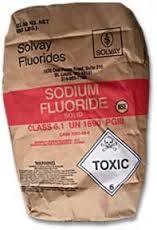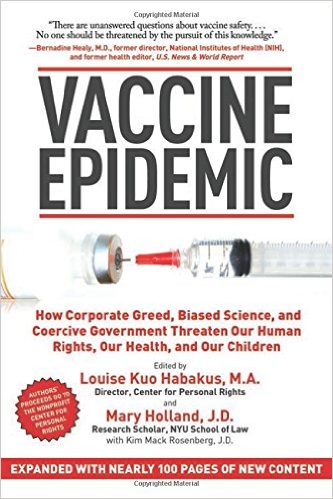Many countries have never adopted community water fluoridation and many are removing it. Beyond the draconian measure of what amounts to a forced, one size fits all prescription, fluoridation is having further reaching effects.
According to a 2012 Harvard Public Health Study, evidence is growing that cognitive and developmental issues including lower IQ, is being found in those drinking water that is fluoridated.
A Sonoma County, California newspaper tied the impact of water fluoridation on copper pipes to Alzheimer’s Disease.
 Chemicals used in water fluoridation are not calcium fluoride, which is what a young scientist found to be naturally occurring in wells of residents in Colorado that caused the “Colorado brown tooth.” These chemicals are a toxic waste product of the phosphate industry.
Chemicals used in water fluoridation are not calcium fluoride, which is what a young scientist found to be naturally occurring in wells of residents in Colorado that caused the “Colorado brown tooth.” These chemicals are a toxic waste product of the phosphate industry.
Community water fluoridation provides no mechanism to control individual exposure levels because tap water is used in many various ways. For example, in the processing, canning, and bottling of numerous food products that we may (or may not) consume.
Fluoridation has been controversial since its adoption to prevent tooth decay in children and adults. What began as an experiment quickly turned into a widespread war that has lasted for over half a century. Although community water fluoridation continues to grow and the CDC still claims that it is in the top ten most important public health accomplishments in the 20th century, they have never adequately addressed the opposition which remains strong.
In this YouTube interview, Dean Burk, PhD, co-founder and former chief chemist for the National Cancer Institute says that “Fluoride amounts to public murder on a grand scale.” Scientists face significant pressure to toe the line. Burk didn’t share this information with the public until late in his career and he also filmed this interview outside of the United States.
If you are interested in more information, I highly recommend Fluoride Action Network‘s website. FAN provides a wealth of important facts, helpful tips, and supporting science that places this important debate into context, including:
- The dangerous health effects of fluoride, from arthritis to thyroid disease.
- Most developed countries do not fluoridate their water. Americans drink more fluoridated water than the rest of the world combined.
- Top ten ways to reduce fluoride exposure. Most people do not know that wine and grape juice made in the U.S. have high levels of fluoride pesticide.
I have watched countless debates and presentations, and I have listened to both sides. The activists opposed to water fluoridation have powerful arguments that rebut the research that the CDC and others use to support their policies. It is a very dirty war, and only gets more vicious as time passes.
Throughout my dental training, I was taught that fluoride is a miracle substance that should be liberally distributed because it prevents tooth decay and remineralizes teeth. I even heard that extra fluoride available to uptake during childhood development can guarantee the health of permanent teeth. We were instructed to recommend fluoride pills, gels or rinses for home use, and fluoride treatments in the dental office that were covered by insurance.
Back in the day, dentists used to perform a fluoride treatment by putting Neutral Sodium Fluoride foam into a tray that fits over your top and bottom teeth. They’d also use a suction in because patients aren’t supposed to swallow it. Remember this? I do. I was still a child. I remember gagging, coughing, and secretly removing the trays when the hygienist left the room. I always had a stomach ache after I left the office because I did swallow some of it, through no fault of my own. Now I am the hygienist, and it saddens me to recall that a child gagged so terribly that she vomited before completing the two minute treatment.
Today, there is far less risk of swallowing fluoride because dentists apply it in varnish form. It’s highly concentrated, however, and many parents are still concerned. I understand their fears and provide them with information so they can make educated decisions for themselves and their children. The evidence is slowly winning people over and I remain hopeful that water fluoridation will decline. I also feel that sooner than later, topical treatments in the dental office will also decline, at least for high risk populations.
Even with involuntary water fluoridation, dental disease remains prevalent. Since oral health is crucial to overall health, this is an important public health concern. Those with periodontal disease, for example, are at a greater risk for both heart disease and diabetes. Children are getting these diseases earlier than ever. Most people fail to connect the dots, and do not understand the link to oral health. David Katz, MD, founder and Director, Yale Prevention Research Center, says that an estimated 90% of our population does not understand what we tell them about their health. Dental professionals must do a better job educating our patients. This is is one of our most important responsibilities as health care providers.
There are safe alternatives to water fluoridation. One of the simplest is Xylitol, a plant based sweetener derived from the birch tree. Xylitol offers both dental and nutritional benefits, and outperforms fluoride on safety and efficacy.
A large number of state dental boards do not permit dental hygienists to practice independently from dentists. Check to see if your state allows it. Regardless, there’s great information available. Dental disease is preventable. If you want to stay out of the dentist’s chair, find like-minded professionals who can support you on your journey to good oral health. You deserve to feel comfortable with every health treatment decision you make.

Kala is an independent dental hygienist in private practice in Rockland, Maine. Prevention of dental disease is her number one goal in patient care. She teaches patients that oral health is tied to our overall health, and educates them on self-care and the use of natural and biologic solutions. She also offers phone consultations, custom treatments, and community-oriented education programs.













The fluoride varnish has risk of its own, perhaps even more so than the old fluoride trays. We had to look into this recently when one of our children, who had never had any noticeable reaction to fluoride treatments, had terrible intestinal AND neurological reactions to Vanish Fluoride Varnish, made by 3M.
His symptoms began a few days after the treatment, with nausea, vomiting, severe diarrhea, and then headache, facial pain, dizziness, tinnitus, exhaustion, slowed reaction time, tingling fingers, clumsiness, and worst of all, a major regression of autistic symptoms that had disappeared years earlier. His symptoms lasted for months; he was forced to miss school, drop a class, and drop extra-curricular activities.
Luckily, he was in high school (I would think his symptoms would have been far worse, had he been a toddler), and had been considered “recovered” from autism several years earlier. He was able to tell us of all his symptoms. It was heart-breaking for us that he was able to tell us that he “felt much more autistic,” and that he felt brain-fogged. He even described it as feeling like his brain had been poisoned.
Here is the Material Safety Data Sheet for Vanish: http://multimedia.3m.com/mws/mediawebserver?mwsId=SSSSSuUn_zu8l00xM82G58_B4v70k17zHvu9lxtD7SSSSSS–
It has been changed since I took a screen shot of it last year. Last year, it said, “This product contains a chemical or chemicals that may cause cancer.”
Now it says, “Contains a chemical or chemicals which can cause birth defects or other reproductive harm.
This product contains ethanol. Alcoholic beverages and ethanol in alcoholic beverages have been classified as human carcinogens by the International Agency for Research on Cancer, the U.S. National Toxicology Program, and the California Environmental Protection Agency (for purposes of Proposition 65). Exposure to ethanol during the foreseeable use of this product is not expected to cause cancer.”
Every symptom our son had is listed on this sheet, but we were not given a copy of it by the dentist. We were not told of any risks associated with it. At the time it was given to our son, it had not been approved for pediatric use; it did receive FDA approval as a whitening agent for adults, and dentists are legally permitted to use it off-label as a pediatric fluoride treatment.
I hope this information helps someone avoid the trauma experienced by our son. I also hope it dispels the myth that this product is somehow safer than the previously used fluoride treatments. Obviously, in our son’s case, it was far more dangerous.
Varnishes are highly concentrated and it has been shown that they are unnecessarily made this way. Fluoride topically can be very useful in very low doses. I think we do need to be better educated on the harm it can do, especially on who is at high risk for these types of reactions. I am sorry for the bad experience for your son, but, if its any consolation, it is my mission to seek out the answers and I hope that it becomes all oral health professionals’ goals.